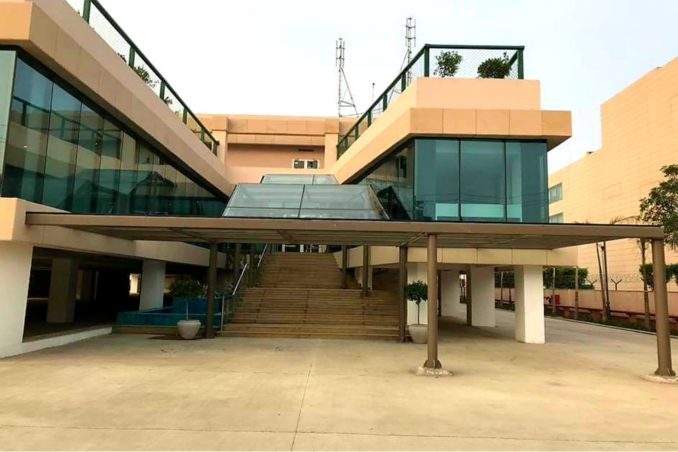Structural Glazing can be simply defined as a continuous system of bonding of specialized glass to an aluminium frame using specialized silicone sealants. While technically any type of glass can be used in structural glazing, the types are carefully selected considering many factors that range from energy conservation to subsequent interior decorations. The aluminium frames utilized have to obviously be of high-strength nature. The silicone sealants used are supposed to be high-performance sealants that can protect the building from air, dust, moisture, and heat.
Structural Glazing:
Advantages of Structural glazing:
In structural glazing the two materials predominantly used are glass and aluminium. Both these primary materials neither corrode nor decay when comparing other conventional building material like wood, iron, steel etc.
The processed glass used in structural glazing system also insulates the building from heat and sound. Insulation from outside heat once again translates to less air-conditioning requirements and hence reduced energy bills.
Most high-rise buildings require heavy maintenance. But a building with structural glazing done requires minimal maintenance only. They are effectively protected against damages caused by wind, water and heat.
Since their installation is modular in nature, other building activities can also be accommodated simultaneously.On the whole, the entire building gives a perfect finish as they appear uniform and smooth.
Where would structural glazing be used
Structural glazing is used extensively in personal homes, offices and other co-work buildings in a variety of architecturally innovative and visually compelling ways. Glass extensions are being increasingly adopted by architects as a way of increasing space and natural light without the frames and limited structural possibilities.
Strengthened, laminated glass can also be used in floors, roofs and frameless glass walls. This offers endless opportunities to homeowners and architects to create an open, light atmosphere while still organising internal spaces and providing shelter. As a material, glass can now be applied in the same way as many other building materials when it’s particular properties are taken into account, with architects and engineers continually finding new ways to take advantage of the vast design possibilities that structural glazing presents.
Why structural glazing:
Structural glazing can offer a greater coherence and connection between the natural world and our buildings, while still protecting us from the elements. It allows sunlight to flood a home without any attendant annoyances that have previously hampered glass structures, such as overheating and the subsequent loss of heat at night. In fact, advances in technology mean that insulation is actually one of the great advantages of using structural glass.
The inclusion of structural glazing also adds an element of modern luxury to any home – and there is a distinct advantage in the fact that glass can complement older and listed buildings in a way that does not compromise any historic value. Frameless glass, in particular, can be added to or within a building without obscuring original features.








